Success Story: 1955 Ford F-250
Last September, I wrote about this 1955 Ford F-250 that was located here in central Kansas. The Craigslist ad said the location of the truck was near Maize, which is a suburb of Wichita. Shortly after I had written about this old farm truck I received an email from a gentleman from the Northeast, named Will. Will was inquiring to see if I could go and evaluate the truck for him as he was interested in potentially purchasing it. Since the truck was located about half an hour from where I live, I was happy to help.
Will then spoke with the owner and let him know that I’d be contacting him to set up a time to look at the truck. After talking with the owner, I was surprised to find out that the truck was located only about ten minutes from my home! Now living in Arizona, the owner had wisely put a different location on the listing as to divert any potential thieves. Interestingly enough, I’ve passed by the farm where the truck had been stored hundreds of times in my lifetime (nearly as long as the truck had been stored). The owner had tucked the old farm truck away back in 1979, not knowing exactly what he’d like to do with it in the future. Decades later, the farm was being sold and so the truck had to go.
After speaking with Will and the owner, I set up a time to view the truck. I was able to meet with the owner’s brother, who was still living on the farm at that time. He was very kind and was glad to carve time out of his day so I could look things over. We had a great talk, not only about the truck but about years-long spent as well. Surprisingly, for a farm truck, it had very little rust through and the interior was actually in really nice shape for being original. Opening the patinaed exterior to find that interior was a bit of shock. The truck didn’t run and unfortunately, the engine was stuck. Marvel Mystery oil was applied in hopes that it could possibly break free.
Because Will was over 1,000 miles away, I thought it would be wise to bring in a second opinion on the old Ford. My friend, Andy, is a tried and true car and truck guy and specializes in “foster care” for older vehicles. His passion for all things automotive can be found at Fridays Garage on Facebook. He was glad to give a second opinion on the truck and soon struck up a relationship with Will as well. Will and the owner were able to come together on a price for the truck and Andy brought it home for foster care until it could be shipped to the new owner. Andy did a phenomenal job getting the truck cleaned up but unfortunately, he did find that the engine was shot.
Even with needing a replacement engine, it was great to see the project come out of its slumber and go to someone who will put it back on the road. Like any project, this one will need some work. As of May of this year, Will had the truck delivered and was planning to get the mechanical components in operating order. Fortunately, Andy was able to source him a 223 IL6 engine just a few hours from his home, which had already been delivered. He is pleased with the look of the original finish and plans to drive it as is. He has also elected to keep the grain door on the tailgate as a unique conversation piece. I think Will is going to have a great time with this truck and I was privileged to get to be a part of the process, even if it was a simple writeup. Even better than the vehicles that we get to enjoy are the people we get to meet and the stories we hear along the way.
Auctions Ending Soon
 2002 Subaru Impreza WRXBid Now2 days$333
2002 Subaru Impreza WRXBid Now2 days$333
 1975 Chevrolet Corvette ConvertibleBid Now2 days$4,000
1975 Chevrolet Corvette ConvertibleBid Now2 days$4,000
 1964 Ford F-100 Camper CustomBid Now2 days$2,000
1964 Ford F-100 Camper CustomBid Now2 days$2,000
 2006 Jeep Wrangler SportBid Now4 days$10,500
2006 Jeep Wrangler SportBid Now4 days$10,500
 1974 Datsun 260ZBid Now6 days$750
1974 Datsun 260ZBid Now6 days$750
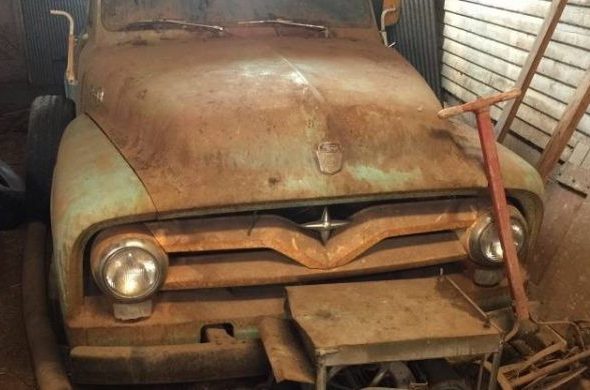
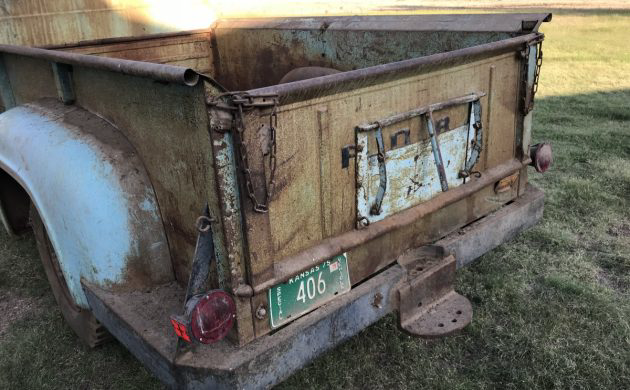
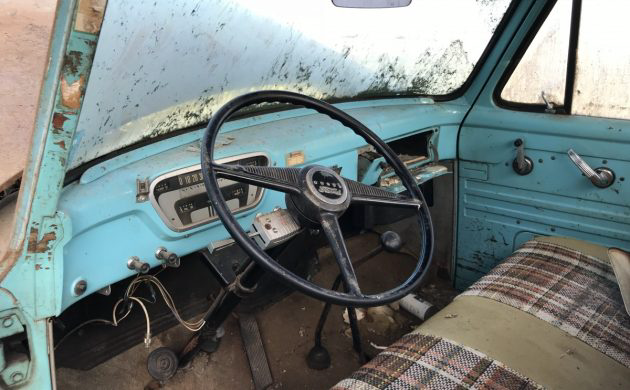
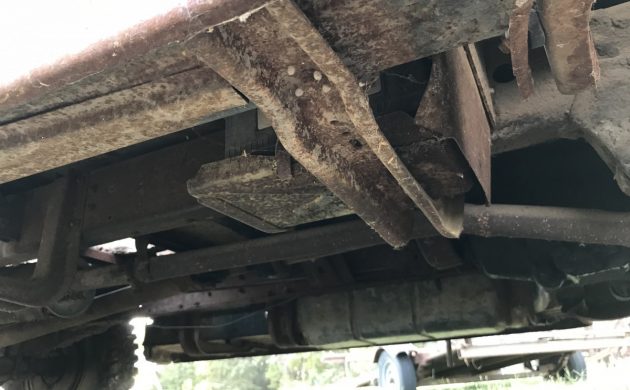
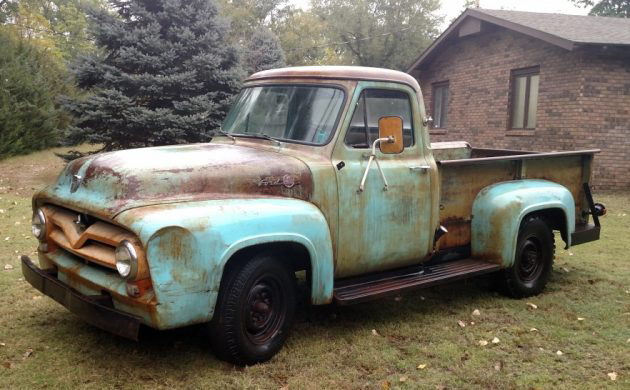
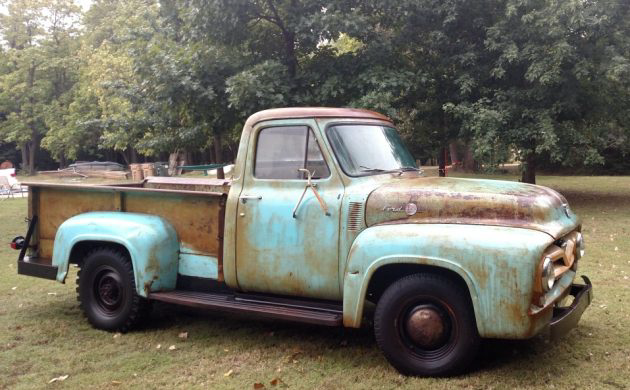

Comments
Big thumb’s up Chris & Andy, and congrats to Will!
Sometimes it takes a few folks to make things happen, and Will was lucky enough to have you two…
Thank you for the nice words, Paul!
I like a story with a happy ending.
Great story. Now if Andy could just find me my HS car, a ’46 Mercury convertible.
Paid $155 for it off a used car lot in ’56. Still hate myself for parting with it the next year on a trade in. Got $75 for it. Hey I was just a kid of 17. Oh, if I could only go back in time. : (
I would have built a nice y-block for it myself, but I suppose he wants to keep it original. I hope he loses those aftermarket mirrors, they just don’t look right on an old truck.
I see the grain chute in the tailgate, which leads me to believe that it had a ram at one time to dump the grain. If the box still tipped, it would be the perfect truck for me.
Back in 1967, I bought a 53 Mercury with a caged flathead. I replaced it with a 312 TBird Y block, but had problems with top end oiling and ended up installing a 394 Olds engine for less than it would have cost to fix the oiling issue. It was the perfect combination for me. I am sorry I sold it.
Bob
Yup a grain door in the tailgate. Kansas is a great wheat growing state. Growing up in Eastern Oregon, the farmers personal pickup often had such a door cut into the back to pick up small piles of dumped grain or to empty out a wheat combine hopper at day’s end. But that pickup and the actual wheat trucks ( usually WW2 1 1/2 – 2 tonners) did not have hydraulic dumps. Pulling into the elevator, you parked the front wheels on a lift and the truck front was raised thus dumping the load into the grate in the floor. Usually all these vehicles had the exhaust running from the manifold(s) right out the top of the front fenders where the muffler was mounted. A wheat fire is a fearful thing. The fast burning grain creates a long front line and the rising heat draws in air behind it creating a horizontal rolling cyclone that fans itself. Seen a few. :-) Terry J
Great story Chris.
Thank you, Bob!
What is a caged flathead?
I’m a Ford guy, and I haven’t clue. Guess you need to ask Bob S
That was the slang we used in our area back in the 60s, to indicate that an engine was seized. i was pilot in the air force, and my guess is that it originated from the term caged gyros, which meant that any instrument depending on a functioning gyro was useless.
Maybe I should have said that it had extremely high compression. :-)
Bob
The varying conditions of the exterior paint intrigued me. Does anyone know or have a theory about why the fender paint is in the best condition, other body panels have less paint, and the bed sides are completely bare (except for oxidation/rust).
Might the bed been made by an outside supplier who prepped and primed differently (thinner coats, different materials)? With both the inside and outside surfaces of the fenders exposed to the elements, might there have been less expansion/contraction of the primer and paint, or had all fenders been undercoated? The hood and cab go through different temperature extremes, but the top surfaces, exposed to the sun, seemed to fare less well. Any ideas?
I guess nobody wants to tackle your question, Cliff! I was curious about the way the paint faded also.
Hey Cliff, sorry for the late response… I hadn’t looked back at the comments for a few weeks. That’s a great question about the paint and the different shades/conditions throughout the truck. I wish I had a direct answer or contributing reasons. I’m the paint instructor at McPherson College and I’ve found that there are often paint related items just like this that will always be a bit mysterious or baffling. Based purely on speculation, I might say that the parts were potentially painted in different locations in the factory with different painters. There are also times when manufacturers change paint brands during production and this can also change the longevity of materials. If the truck boxes were painted in January but Ford was spraying a new brand of products on that particular run of fenders in June, that may explain the differences in material longevity through the years. Again, this is pure speculation, but not out of the realm of possibility. There’s also the possibility that some parts were “freshened up” before spending that time in the barn. There are obviously varying possibilities but ultimately, we may never know what the real reason is. Thanks for reading and for a great question!
Weather–humidity has alot to do with anything too. If you have above 30 %humidity–better wait or you will have alot of work going back over it .Then apply as it does get down to 30 % or less.Same thing as working on a gun.
Bob S, when I was working at a NAPA parts store in the late ’60s and early ’70s. (afternoons and evenings while in high school) We sold “top oiler” kits for “Y” blocks and almost everything else with rocker shafts. (I also remember Ford 6 cylinders and Oldsmobile V8s)
Back then, even I could afford a top oiler kit if I needed one.) It was not an original equipment kit. It was in most cases used to send oil to the rocker shafts where sludge had caused restrictions and blockages. (Remember the days of 1,000 mile oil changes, large amounts of zinc in the oil, lead in the fuel and draft tubes instead of PVC systems, optional oil filters and valve jobs at 50,000 to 100,000 miles?) Oh, and don’t forget points, condenser and spark plug changes every 12,000 miles!) The good old days??? There were great quality vehicles being made then, (along with some junk) but it would be great to see how a good quality vehicle with proper rust protection, no lead in the fuel, electronic ignition, fuel injection and today’s quality oils would last. I realize that today’s engine metallurgy is different then back then. But just a cleaner running engine would be light years ahead on the longevity scale.
Just thinkin’
I have a ’55 F-100 with a 292 Y block showing a mfg number indicating Canadian Mercury minting from ’59-’60 and a history of it being rebuilt for use in this truck in 2009. Your comments make me want to ask what routines I should be observing regarding care and upkeep of this engine. The only reference I have about Y blocks is a book on rebuilds and hopping them up for racing. I use mine for weekend jaunts and try to avoid speeds over 55-60 when possible. Any thoughts? Thanks, Richard B.
Change the oil regularly, and stay away from parafin based oil, ie; Pennzoil, Quaker state, Havoline. I have a 56 F100 with a moderately modified 292. I use, and recommend, Valvoline. Install a PCV system, and electronic ignition. And drive it.
I forgot to mention, add lead substitute to the gas with every fill-up.
Have you ever tried to stop a dump truck with 12 ton of gravel when the motor shuts off–going down a steep hill ? That can be caused buy and electronic ignition. It happened to me. I scrapped the electronic box and distributor and put in a point distributor and havn,t had any problems since and don,t change points every 12.000 miles. I wonder how many people has been killed because of the electronic system failing in heavy -fast traffic or going down a steep hill. I was lucky and wised up.
Hello from a fellow Kansan. I notice a lot of 3/4 ton trucks being bought. Why do people choose them over the 1/2 ton trucks?
I think that’s just because 1/2 tons have gotten scarce and expensive. That results in folks looking beyond what was the norm and both 3/4 tons and less popular makes ( like my ’41 Dodge) are coming into popularity. :-) Terry J
Great story and a great looking tuck too!!!
Non-roller camshaft engines (mostly older than 1986) and do not have catalytic converters need the zinc additive at every oil change. I also try to use non-ethanol gasoline whenever possible. (Luckily that is an option at some of the fuel stations around here) The zinc was removed from oils because of damage it does to cat-converters. You can find the additive at most auto parts stores or order if from Summit Racing. Ethanol tends to corrode non-stainless steel fuel parts. (Fuel lines, carburetors, etc.) Although not as bad as E85 fuel. I recently worked on an old tractor that had had been restored. ( fuel tank cleaned and sealed, new fuel line, carb. rebuilt with a new float, etc.) And the only explanation that I could come up with for the Viton top on the carb. needle softening and sticking in the seat was ethanol fuel. (anyone else have a theory?)
As for keeping the speed down in your old Ford truck. As long as the RPM isn’t astronomical and the suspension and brakes are up to the task. Legal speed limits should be fine.
JMHO
Ethanol gas WILL also eat the metal away from you sending unit in the tank. I had it to eat away part of the metal that wraps around the brass float. Plus you can take two pop bottles. Put 100% gas in one and ethanol gas in the other. Set them on a shelf and in about 2 or 3 weeks. You will see black like tar building up in the bottom of the ethanol bottom. It is useless and causes more damage , I think the big car companys bought a big interest of ethanol.So they can work on the vehicle and make more money.Plus they tell you have to use ethanol gas. I quit useing it . I paid for the truck and it is still running after about 3 yeas yseing real gas.
Thanks everyone for tips. I do add zinc at oil changes, ethanol treatment when refueling with regular,(the distances between ethanol-free pumps was often too great). I remain curious about valve adjustment. Some older material I’ve read suggest a surprisingly frequent schedule. Valves seem pretty quiet for now and even surprisingly so at 55-60 mph. Contemplating gear change in rear end (now 3.92) to lower rpms. I have converted front brakes to discs and dual master cylinder in case I ever have to stop.
Don’t we all just love a happy ending!! But, modular V8 would be nice….
Richard Brown, Don’t go by the sound of the valves. Intakes tend to go loose and exhausts tend to go tight. (ever wonder why exhaust specs are usually wider/more gap?) Exhaust valves run hotter and are more prone to valve and seat wear. As the wear happens the valve then seats/sits deeper into the cylinder head causing the valve lash to diminish. I have seen several instances where readjusting the valves caused a large improvement in the compression as the valves where not seating completely. Needless to say the vehicle was now running smoother. The owners knew that they needed a valve job. And luckily for them it had not progressed that far yet. But when a valve starts hanging open even a little bit. A burned valve is not far away.
Thanks Wayne. I’m guessing I need to have someone familiar with how a well-adjusted 292 should sound before attempting to tackle this procedure. I don’t know how many miles since the rebuild in 2009 but I’d guess not more than 5000-6000? I could be way off but the truck is not a “cruiser” and gets about 13+\- mpg. The lack of history before the owner from whom I purchased the truck is my issue… well, that and my general ignorance…
Richard.
A light clatter is normal, as these engines have solid lifters. If excessive clatter, or no clatter at all, they definitely need adjustment. Checking with a feeler gauge is the only way to know for sure. Btw, assuming your truck is a manual transmission, I’d be interested in knowing how you installed a dual master cylinder.
Dual master cylinder had to be installed rearward of original single cylinder placement. Tucked up close to underside of the floor, checking fluid level requires a mirror on a stick and/or the insertion of a fingertip to assess.
The new setup is superior for hard stopping and the rear shoes still require fine tuning which I usually attend to at oil changes.
Really great that you took time out of your schedule to help a fellow rodder, that’s how I remember the hobby used to be. Of course that’s before it became strictly about dollars instead of the cars.
George, there are a number of posters on this web site that I make a point of reading who I’m sure would be more than happy to share their experience/tips with you.
I don’t have a ton of money myself, as I suspect many of them don’t either, but you can tell if they are fans of sensible restorations and work arounds.
Go out on a limb and ask.
My father gave me his 56 F100.. I have been restoring it back to original condition. It was manufactured in longbeech and is a rust free truck 223 6 with 3 speed and overdrive it has side mounted spare with original heater.. It was always a califsmogy truck But now a South Carolina truck..